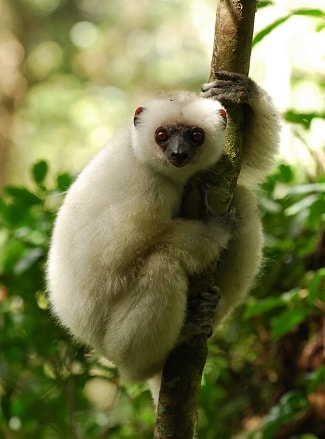Introduction
Madagascar, which is the fourth largest island in the world, is located in the Indian Ocean off the southeastern coast of Africa. Tropical rainforests are found in a narrow strip along the eastern coast of this island. In these forest are numerous animal and plant species many of which are endemic (unique) to Madagascar. This island is one of the most bio-diverse regions on Earth. On this page is a list of interesting facts about these tropical rainforests including what animals are found there, why they are home to such a diverse amount of animals and plants, and how these forests are being destroyed at an alarming rate. The information on this page is written for both kids and adults.Click here for a great selection of Amazon.com books about Madagascar.
Interesting Madagascar Tropical Rainforest Facts
- Madagascar's tropical rainforests are often called the "lowland forests" or the "lowland rainforests" because of their low elevation.
- This island has numerous animal and plant species that are endemic (unique) to the island. Approximately three-fourths of the animal species living on Madagascar cannot be found anywhere else on earth. This is mostly due to the islands isolation from other land masses.
- Madagascar's tropical rainforest are found on the eastern side of the island between tall mountains to the west and the Indian Ocean to the east. Warm air from the Ocean is trapped along the eastern region of the island by the mountain ranges creating a warm moist climate ideal for tropical rainforest.
- More than 100 inches (254 centimeters) of rain fall on Madagascar's rainforests annually.
- Numerous species of lemur live in the tropical rainforests of Madagascar; including Bamboo lemurs, Black lemurs, Red-ruffed lemurs, Black-and-white ruffed lemurs, and Indri (babakotos), the largest living lemurs in the world.
- Orchids are the most abundant plants found on Madagascar. More than one thousand species of orchids grow on Madagascar; with many of them endemic (unique) to the island.
Madagascar Rainforest Destruction Facts
- Beginning with the colonization by European settlers in the late 1800s the tropical rainforests on Madagascar have been steadily destroyed by humans where, by some estimates, only ten percent of the original forests are left.
- Madagascar's rainforests region is shrinking mainly due to deforestation caused by agriculture and logging.
- Overpopulation and poverty on this island have led to people expanding into the rainforest to exploit its resources; often against laws that have been put in place to protest the forests.
- This island nation has created several national parks in an effort to protect the islands forests. These parks include Masoala National Park, Mananara Biosphere Reserve, Ranomafana National Park, and Ambatovaky Special Reserve.
- The destruction of these rainforests have led to numerous animals going extinct and many others becoming endangered. For example, the Silky Sifaka (a lemur) is in danger of extinction; it is one of the rarest animals on earth. An image of this lemur is located at the top of this page (for non-mobile devices).
- Madagascar's Atsinanana Rain Forest which consist of six national parks located along the eastern shore of the island, has been designated a World Heritage Site by the United Nations Educational, Scientific and Cultural Organization (UNESCO). It was a declared a World Heritage Site due to its natural importance and in an effort to protect it.
